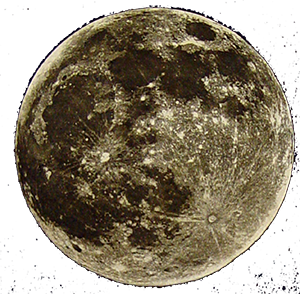

 Pavilhões do início do século XX
Pavilhões do início do século XX Infogravuras e máquinas antigas.
Infogravuras e máquinas antigas.

The exhibition "Photography, Science, and Art" opened on 18 May as one of the activities of MAST in the National Museum Week, whose theme for 2009 was museums and tourism. MAST's contribution to this event was to explore various nuances of an accessory almost always indispensable for the tourist: photography. In this way the exhibition makes available to the public part of the collection of cameras, equipment, and photographs, as well as holding workshops of pinhole photography.
It was not only the coincidence with the international year of astronomy which allowed us include the theme of astronomical photography in this sample. It should be noted that the exhibition is housed in the dome of Equatorial Refracting Telescope 21, which contains a camera linked to it, while underneath it there used to a photographic development laboratory for astronomical photographs. The use of photography in astronomy opened other possibilities of observation previously impossible to the human eye, which were materialized in a new perception of time. From this moment onwards, the instant could be artificially frozen, chopped up, accelerated, and made reversible.
The same process which in science represented a qualitative leap forwards in the work of the scientist is present in photography seen as an artifact of personal or collective memory, or in its aesthetic appropriation. In this sense, the exhibition aims to show the utensils used in the revelation process of photographs, such as glass and precision scales in which the chemical products were prepared. The idea which motivated this exhibition was to make something generally hidden visible, in other words the technical aspect of photography, without invalidating its aesthetic nature.
Previously unseen images were chosen from the MAST archive, taken during the 1903 journey of the astronomer Henrique Morize to demarcate the frontier of Brazil with Argentina. We can see that Morize used his camera like a 'tourist' who records landscapes and customs wherever they go. Morize's photos exhibited here can be seen from various perspectives, due to their scientific, historic, and aesthetic value. This dual insertion of scientific photography, which can be seen as a work of art has already been explored in various works. It is thus possible to conceive photography and its equipment as a motive of inspiration for the info-prints work of the artist Ivo Almico. These images represent the subjective perspective of the artist towards apparatus seen as instruments of precision and objectivity in the comprehension of reality.

It was not only the coincidence with the international year of astronomy which allowed us include the theme of astronomical photography in this sample. It should be noted that the exhibition is housed in the dome of Equatorial Refracting Telescope 21, which contains a camera linked to it, while underneath it there used to a photographic development laboratory for astronomical photographs. The use of photography in astronomy opened other possibilities of observation previously impossible to the human eye, which were materialized in a new perception of time. From this moment onwards, the instant could be artificially frozen, chopped up, accelerated, and made reversible.
The same process which in science represented a qualitative leap forwards in the work of the scientist is present in photography seen as an artifact of personal or collective memory, or in its aesthetic appropriation. In this sense, the exhibition aims to show the utensils used in the revelation process of photographs, such as glass and precision scales in which the chemical products were prepared. The idea which motivated this exhibition was to make something generally hidden visible, in other words the technical aspect of photography, without invalidating its aesthetic nature.
Previously unseen images were chosen from the MAST archive, taken during the 1903 journey of the astronomer Henrique Morize to demarcate the frontier of Brazil with Argentina. We can see that Morize used his camera like a 'tourist' who records landscapes and customs wherever they go. Morize's photos exhibited here can be seen from various perspectives, due to their scientific, historic, and aesthetic value. This dual insertion of scientific photography, which can be seen as a work of art has already been explored in various works. It is thus possible to conceive photography and its equipment as a motive of inspiration for the info-prints work of the artist Ivo Almico. These images represent the subjective perspective of the artist towards apparatus seen as instruments of precision and objectivity in the comprehension of reality.




